Seven Impossible Interviews Before Breakfast #31: Recent Printz Honor Recipient Sonya Hartnett
(an Exclusive Summer Blog Blast Tour Interview)
 June 19th, 2007 by jules
June 19th, 2007 by jules
{Note: For a listing of the other interviews in the Summer Blog Blast Tour featured at other blogs today, scroll down to the very bottom of this post}.
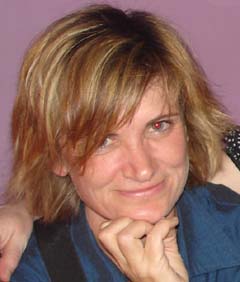
1). Though her writing is terrifically poetic, she doesn’t particularly like most poetry.
2). The Catcher in the Rye makes her shudder.
3). She adores the writing of Robert Cormier.
4). She’s a rather cheery person, despite the “dark” label repeatedly attached to her writing.
5). The love she has for her dog rivals the burning intensity of the sun (as Eisha would put it).
6). She vividly remembers the feelings and simple pleasures of childhood.
7). She loves writing for young adult audiences and finds them very forgiving readers, but the issue of labelling her books and to whom they get marketed (“YA” or “Adult”) has haunted most of her career. In short, she’s weary of the entire topic. If you meet her on the street, best not ask her about it. We don’t blame her.
We at 7-Imp are huge fans of Hartnett’s writing, which is . . . well, the many laudatory things you see down there in our first question to her (lyrical, evocative, precise, to name just a few), and we are pleased to be chatting with her for this week’s Summer Blog Blast Tour. Her very first novel, Trouble All the Way, was published when she was only fifteen years old. (Her feelings about being thrust into the spotlight at such a young age and whether or not, ultimately, she regrets such an early publication are discussed below in the interview as well). Since the publication of that first novel in 1984, Hartnett has penned fourteen novels; co-authored (with Nick Earls and Heide Seaman) an anthology of short stories about mental illness; and written an adult novel (Landscape with Animals, 2006) under the name Cameron S. Redfern (incidentally, she received a lot of unnecessary flack for writing this title under a pseudonym, since the novel includes many sex scenes and she wanted to avoid the book being accidentally shelved in libraries with her work for children; her passionate and incisive response to all the media attention is here, and it’s well worth reading).
As with yesterday’s interview with Brent Hartinger, please scroll down to the seven, centered asterisks (where the interview begins) if you are already a Hartnett fan and do not need a Sonya Hartnett 101. But, if you are not familiar with her novels and we can evangelize her lovely writing for you, by all means, read the following run-down of her works (most of them — a bibliography in its entirety can be found here).
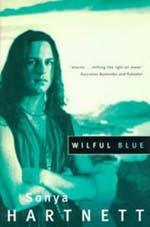
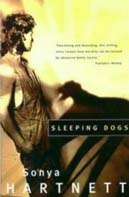
 It was with the 1994 publication of the novel Wilful Blue — two novels after her first — that Hartnett re-emerged (after all the attention as “child author”) as an author-to-watch, the novel eventually being produced as a play and performed at the Arts Centre in Melbourne, Australia, and being awarded the 1996 IBBY (International Board on Books for Young People) Ena Noel Award. This was followed the next year by the publication of Sleeping Dogs (“{b}oth fascinating and disturbing, this chilling story reveals how morality can be twisted by obsessive family loyalty,” wrote Publishers Weekly). Five novels later, the year 1999 brought us Stripes of the Sidestep Wolf (first published in the UK in 2004), which was shortlisted for the 2002 Children’s Book Council of Australia Book of the Year Award (Older Readers). Candlewick picked up the title for publication in the States in 2005. The novel tells the story of Satchel O’Rye, devoted son of an impoverished couple in a dying rural town, who sees a strange, striped animal one day while cutting firewood. He describes it to a friend’s older sister, who claims it is a thylacine, or sidestep wolf, an animal that is allegedly extinct. Eventually, as the plot unfolds, Satchel must decide whether it is more important to earn more money for his family by taking great advantage of the existence of an animal that has “sidestepped extinction” or to protect the freedom of the thylacine and her cub. School Library Journal called it “{a} complex, introspective novel with vivid characters” and Booklist described it as “uncompromisingly stark” (a fitting description, it seems, for many of Hartnett’s other unflinchingly honest novels that really push the boundaries of YA lit and refuse to talk down to those teens who pick up her books).
It was with the 1994 publication of the novel Wilful Blue — two novels after her first — that Hartnett re-emerged (after all the attention as “child author”) as an author-to-watch, the novel eventually being produced as a play and performed at the Arts Centre in Melbourne, Australia, and being awarded the 1996 IBBY (International Board on Books for Young People) Ena Noel Award. This was followed the next year by the publication of Sleeping Dogs (“{b}oth fascinating and disturbing, this chilling story reveals how morality can be twisted by obsessive family loyalty,” wrote Publishers Weekly). Five novels later, the year 1999 brought us Stripes of the Sidestep Wolf (first published in the UK in 2004), which was shortlisted for the 2002 Children’s Book Council of Australia Book of the Year Award (Older Readers). Candlewick picked up the title for publication in the States in 2005. The novel tells the story of Satchel O’Rye, devoted son of an impoverished couple in a dying rural town, who sees a strange, striped animal one day while cutting firewood. He describes it to a friend’s older sister, who claims it is a thylacine, or sidestep wolf, an animal that is allegedly extinct. Eventually, as the plot unfolds, Satchel must decide whether it is more important to earn more money for his family by taking great advantage of the existence of an animal that has “sidestepped extinction” or to protect the freedom of the thylacine and her cub. School Library Journal called it “{a} complex, introspective novel with vivid characters” and Booklist described it as “uncompromisingly stark” (a fitting description, it seems, for many of Hartnett’s other unflinchingly honest novels that really push the boundaries of YA lit and refuse to talk down to those teens who pick up her books).
 And then came Thursday’s Child in 2000 (Candlewick reprint in 2002), set in the harsh mining outback of Australia during the Depression on land that is “particularly exhausted or maybe simply sullen.” The novel tells the story of seven-year-old Harper Flute and her younger brother, Tin, who escapes his undernourished (in more ways than one) family and their very difficult existence, mired in poverty, by digging a network of subterranean tunnels under the shanty known as their home. If you haven’t read this book and you trust our opinion here at 7-Imp, why then, go get a copy right now. Absolutely beautiful writing, and Hartnett’s skills as a masterful storyteller are really on display here. Publishers Weekly wrote, “{t}he haunting eloquence and dreamlike weaving of the mythic and the mundane invite comparisons to the works of David Almond.” I (Jules, that is) suppose I was a bit late in coming to Hartnett’s writing, but once I found this novel, I knew I had found a writer whose career I was, without any question, going to follow and whose books I was going to devour.
And then came Thursday’s Child in 2000 (Candlewick reprint in 2002), set in the harsh mining outback of Australia during the Depression on land that is “particularly exhausted or maybe simply sullen.” The novel tells the story of seven-year-old Harper Flute and her younger brother, Tin, who escapes his undernourished (in more ways than one) family and their very difficult existence, mired in poverty, by digging a network of subterranean tunnels under the shanty known as their home. If you haven’t read this book and you trust our opinion here at 7-Imp, why then, go get a copy right now. Absolutely beautiful writing, and Hartnett’s skills as a masterful storyteller are really on display here. Publishers Weekly wrote, “{t}he haunting eloquence and dreamlike weaving of the mythic and the mundane invite comparisons to the works of David Almond.” I (Jules, that is) suppose I was a bit late in coming to Hartnett’s writing, but once I found this novel, I knew I had found a writer whose career I was, without any question, going to follow and whose books I was going to devour.
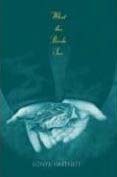 And then it just got even better. After the 2001 publication of Hartnett’s Forest — winner of the 2002 Children’s Book Council of Australia Book of the Year (Older Readers) — there came What the Birds See, published by Candlewick in 2003 (but originally released in 2002 in Australia under the title Of a Boy). With this novel, Hartnett takes the most over-used adjective in book reviewing, “haunting,” one step further to downright spectral and flat-out chilling with its themes of love (or a lack thereof), loss, the innocence and vulnerability of children, and the emotional damage that can occur to them when neglected. The book starts right off with the mysterious disappearance of three children in Australia, who never make it back home after a trip to an ice cream shop. Then we meet, in a nearby town, nine-year-old Adrian, precocious and full of fear (sea monsters, for one, occupy his thoughts a great deal), forced to live with his grandmother, or “granmonster,” who would much rather not be burdened with the care of a child. Noticing the arrival of three children in the home across the street, Adrian begins to wonder if they could be the ones missing. Eventually, he befriends the eldest girl, Nicole, and the fate that befalls them at the book’s close provides an emotionally gut-punching and unforgettable ending, so carefully and expertly and beautifully laid out by Hartnett. School Library Journal nailed it when they note, “{r}arely is a sentence turned so well, a setting so remarkably established, and a plot so evenly polished as in this book” (but oh my, if you want to read the novel, don’t read the rest of the SLJ review, which pretty much lays out — and with no apologies — the shocking ending for you. Spoilers: bad). And Booklist wrote:
And then it just got even better. After the 2001 publication of Hartnett’s Forest — winner of the 2002 Children’s Book Council of Australia Book of the Year (Older Readers) — there came What the Birds See, published by Candlewick in 2003 (but originally released in 2002 in Australia under the title Of a Boy). With this novel, Hartnett takes the most over-used adjective in book reviewing, “haunting,” one step further to downright spectral and flat-out chilling with its themes of love (or a lack thereof), loss, the innocence and vulnerability of children, and the emotional damage that can occur to them when neglected. The book starts right off with the mysterious disappearance of three children in Australia, who never make it back home after a trip to an ice cream shop. Then we meet, in a nearby town, nine-year-old Adrian, precocious and full of fear (sea monsters, for one, occupy his thoughts a great deal), forced to live with his grandmother, or “granmonster,” who would much rather not be burdened with the care of a child. Noticing the arrival of three children in the home across the street, Adrian begins to wonder if they could be the ones missing. Eventually, he befriends the eldest girl, Nicole, and the fate that befalls them at the book’s close provides an emotionally gut-punching and unforgettable ending, so carefully and expertly and beautifully laid out by Hartnett. School Library Journal nailed it when they note, “{r}arely is a sentence turned so well, a setting so remarkably established, and a plot so evenly polished as in this book” (but oh my, if you want to read the novel, don’t read the rest of the SLJ review, which pretty much lays out — and with no apologies — the shocking ending for you. Spoilers: bad). And Booklist wrote:
Hartnett’s prose is beautiful, filled with piercing, original imagery that, like David Almond’s, explores the savage, animal instincts in humans, especially children. The climax is shocking, and the telling, unusually honest and haunting, explores the many ways that children can be lost–quickly and dramatically, or through small, failed gestures of imperfect love.

 2006 brought us the 2007 Printz Honor recipient and gripping psychological thriller, Surrender, published by Candlewick and reviewed here by Jules around this time last year. In this story, a twenty-year-old man known as Gabriel recounts, as he is dying, his troubled childhood and his strange relationship with a dangerous counterpart named Finnigan. Propelled forward by a driving momentum, page-by-page, the narrative is terrifically compelling and the book unputdownable. And Hartnett’s most recent novel was a bit of a departure for her. Setting out to write a novel that would, indisputably, be for child audiences, she brought us The Silver Donkey (Candlewick, 2006), in which four French children learn about honesty, loyalty, and courage from an English army deserter in France during World War I who tells them a series of stories related to his small, silver donkey charm (Jules’ review at 7-Imp is here). Writing in the tradition of the classics of children’s literature (think turn-of-the-last-century children’s titles), the writing is resonant and graceful.
2006 brought us the 2007 Printz Honor recipient and gripping psychological thriller, Surrender, published by Candlewick and reviewed here by Jules around this time last year. In this story, a twenty-year-old man known as Gabriel recounts, as he is dying, his troubled childhood and his strange relationship with a dangerous counterpart named Finnigan. Propelled forward by a driving momentum, page-by-page, the narrative is terrifically compelling and the book unputdownable. And Hartnett’s most recent novel was a bit of a departure for her. Setting out to write a novel that would, indisputably, be for child audiences, she brought us The Silver Donkey (Candlewick, 2006), in which four French children learn about honesty, loyalty, and courage from an English army deserter in France during World War I who tells them a series of stories related to his small, silver donkey charm (Jules’ review at 7-Imp is here). Writing in the tradition of the classics of children’s literature (think turn-of-the-last-century children’s titles), the writing is resonant and graceful.
We would like to thank Sonya for stopping by for a cyber-chat here at 7-Imp. Without further ado, here is Ms. Hartnett . . .
7-Imp: We find your writing so lyrical and evocative and graceful and exquisite and precise and introspective and damn near teetering on poetry (whew – oh, and also haunting, though we think that word gets overused in book reviewing). Have you ever written poetry? How did you become such a master of (beautiful) metaphors? We suspect writers like that were quiet, observant children and remain quiet, observant people (quiet, as in listens well and takes in a lot). Are we right?
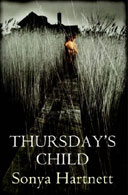 Sonya: I guess I was a quiet, observant child -– I was extremely shy, and I think that is often an underlying reason for being both quiet and observant. I don’t think I’m that way any more. I am still intrinsically shy, but for most of my life I have had to get up on stage, face audiences, answer questions, put on the show required of an author by the media and the publisher and the readers. So I’m actually pretty difficult to shut up, these days. Although the shy person inside me always listens in to my inane prattle, and hates me.
Sonya: I guess I was a quiet, observant child -– I was extremely shy, and I think that is often an underlying reason for being both quiet and observant. I don’t think I’m that way any more. I am still intrinsically shy, but for most of my life I have had to get up on stage, face audiences, answer questions, put on the show required of an author by the media and the publisher and the readers. So I’m actually pretty difficult to shut up, these days. Although the shy person inside me always listens in to my inane prattle, and hates me.
I don’t write poetry -– I don’t particularly even like poetry (poems about dogs excepted, for some reason). When I write, I listen for the tune of the words –- I can hear the ‘music’ of the book very clearly. I try to match the rhythm of the words to the tune I hear. I can always tell if a sentence is wrong, because it jars the flow of the music. And I guess this is what poets do –- construct their words to match a particular beat.
I’m not sure why I’m so drawn to metaphors -– I am often criticized for using them too often. They are a defining characteristic of my style, although I sometimes try to keep them to a minimum (and fail). I have always noticed the interconnectedness of the world -– how things relate to and echo and influence each other, in appearance and behaviour and nature -– and this might be the reason I so frequently draw similarities between various things. I also think it helps fix, quite precisely, the image or emotion I want a reader to absorb.
Jules: What the Birds See is devastatingly, obscenely good writing, probably one of my top-five favorite books ever. I find it striking how you -– as Robert Cormier did — nail the sometimes cruel world of children, the part of their world that gets glossed over when we sentimentalize childhood (in What the Birds See you wrote, “Adrian has never thought that what happened to him had been cruel — children inhabit an animalistic world and accept with grace its harsh rules”). You also really capture the emotional fragility and fears of childhood (in a way that makes me think of Maurice Sendak’s take on the themes of his books). How do you do that? Do you remember childhood vividly?
Sonya: I don’t remember childhood vividly -– indeed, I have very few clear recollections of things said and done and seen in my life until the age of about twenty. But I do remember the feelings of childhood: I remember how it felt to flounder so helplessly in a world that was impossible to understand or control; I remember the terror that small disasters, like lost library books, inspired in me; I remember the shattering loneliness of losing a best friend. I remember, too, the great simple pleasures of being a kid: riding a bike on a newly-made road, eating ice cream and chocolate topping, watching the morning cartoons in a silent house, my feet up on the heater.
I find it interesting that people really love Adrian, and feel so deeply for him. To many readers, he’s more alive and real than any other character I’ve created. I have had women get amazingly angry with me for ill-treating him. I think people relate to him because we all remember and recognize those hard, bright emotions from childhood –- they burn into us, we never forget their ache, or their giddy joy. When readers encounter Adrian, they see something of the child they were. He makes them worry for their own children. He makes everyone cry.
7-Imp: In this country, people tend to place you, as an author, into the Young Adult fiction category (though your titles are also seen as cross-over ones -– stepping over into adult fiction, that is). How do you feel about that label? Do you think it’s accurate? Do you get tired of all the labeling and trying to figure out into which category a country is going to place you, tired of the confusion over your intended audience?
Sonya: I get extremely tired of it. It is an issue that has haunted almost my entire career, and it never gets solved, and somehow I seem to get blamed for it, and have to be the one who explains it, when it’s nothing at all to do with me. By and large, it’s the publishers who decide where a book gets placed in the market. I write whatever comes to me, and I write whatever the book requires. My first responsibility is to the work –- not to the reader, not to the reader’s mother, not to a school teacher, not to a librarian: to the book. If what I write offends someone, I have no qualms about telling that person to look elsewhere for their literary satisfaction.
For some of the books, “YA” is an appropriate label. And I like the idea of teenagers reading my books. They are non-judgmental, forgiving readers, and they don’t get all sqwarky and hysterical about things. But the labelling of my books has been a ball and chain I’ve dragged forever, and I’ve seen ridiculous things happen in attempts to place the work where it ‘belongs.’ I’ve seen What The Birds See promoted as a book for nine-year-olds, because it has a child of that age in it. And I suffer the general scorn with which children’s/YA writers are treated by the media, by festival, etc. (at least, that is the case in Australia). Then I see the work being compared to Faulkner, Steinbeck, Harper Lee –- all these writers who are certainly not writers for the young. These days, the issue is so stupid and annoying and old -– it’s cost me so much respect and recognition, let alone money — that I rarely let myself be drawn into discussing it.
7-Imp: Take us back to when you were age 15 and how it felt to have your first book published. How did it change you? Do you ultimately treasure that publication at such a young age, or do you regret it, by chance?
Sonya: It was, as you can imagine, extremely exciting to be published at 15. I was just an ordinary suburban kid, and things like that didn’t happen to ordinary suburban kids. I was dismayed at the butchering editorial job that was done on it, and the ghastly cover wrapped around it (ever afterwards, I have exercised tight control over the editing and design of the books). As I said, I was forced to change pretty quickly from being a shy, silent kid, to one who could talk to journalists and appear on television -– everyone wanted to interview the ‘teenage writer.’ I had always believed my thoughts and opinions to be fairly dim and uninteresting (and was not necessarily wrong to believe so); but when you are a writer, people tend to assume you are smart and wise, and they give weight to your opinions. And that is not always a good thing, because I know I am not particularly wise or smart. In consequence, I have always felt something of a fraud. The shy person inside me hides behind this loudmouthed, opinionated, self-confident fraud, and screams in horror. I might add, it is the shy version of me who writes the books; the loud one deals with the publishing and promotional side of things.
If I had my time again, I would not publish at such a young age. I don’t mean to sound ungrateful, because the novel gave me a start in a difficult industry. But I got into that industry as a novelty act, The Teenage Writer, and it took me twenty years, and at least ten novels, to shake off that reputation. For years, I wasn’t taken seriously as a writer (I think this is partly the reason much of my work was released as YA –- a novelty act couldn’t possibly write serious literature for adult consumption). Even now, no article written about me fails to mention the fact that I started writing as a teenager. It was 25 years ago, but it haunts me still.
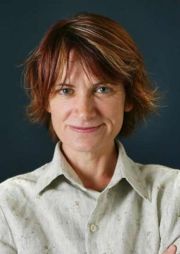 7-Imp: Tell us a bit about the state of children’s/YA book-writing in Australia. How does it compare to America? Is a great deal of attention and respect given to writers of children’s books, or are you ever met with condescension as an author of “just kiddie lit”?
7-Imp: Tell us a bit about the state of children’s/YA book-writing in Australia. How does it compare to America? Is a great deal of attention and respect given to writers of children’s books, or are you ever met with condescension as an author of “just kiddie lit”?
Sonya: I touched on this subject a bit earlier. I haven’t had any experience with how America treats its writers for the young, but I can say that the UK, at least, is much more even-handed about its treatment of authors. The UK has a long tradition of respecting and loving and preserving and encouraging quality literature for the young. Their media seems to grant children’s writing the same space and thought it gives other markets. Things are painfully different in Australia.
People want excellent books for their kids -– well-written, well-produced books. But they aren’t prepared to pay for them, and a children’s/YA book must usually be cheaper than an adult’s book. As a consequence, writers for the young can’t get the big advances given to adult writers (even though, in Australia, three of the top five highest-selling authors are children’s authors). We don’t get nearly the same amount of media coverage –- newspapers run stingy reviews (if at all), the radio and television book shows tackle kids’ books rarely and usually patronizingly, festivals run separate ‘school programs,’ excluding the children’s writers from the program proper (often the sessions themselves are run by children, and this is invariably awkward for everyone; I have attended festivals where the kids’ writers weren’t invited to the opening night party). It’s a thankless task, writing for kids in this country. It is bad enough, having to deal with less money, less respect, less recognition -– but, in addition, you have to deal with loud, doltish people who think that, because you are writing for their children, they should have a say in what you can and can’t write.
There is definitely a sense, in the wider Australian community, that writers write for children because they are too talentless to write for adults. That is pitiful, of course. There is, in addition, an assumption often made that writing for YAs means writing pap. I have lost count of the times it’s been assumed I write romances, just because I write for teenagers.
I could go on about this subject forever. It makes me really angry. But I’ll just say that I have noticed, in recent years, a reduction in the snideness with which writing for children/YAs is treated. This grudging respect stems from the success of Harry Potter. People respect something that can make millions of dollars. And the fact that it’s money –- not beauty, not skill, not appreciation — that has changed people’s attitudes makes me hate the subject even more.
7-Imp: Since you refuse to talk down to teens and some of your books have confronted taboo subjects, your books have met with some attempts at censorship. You never tackle subjects in a facile manner, and you always demand a lot from your readers. Do you think that might truly be why some people object to some of your books? In other words, do you feel like a lot of parents expect or want authors to condescend to teens, that perhaps there’s a lack of respect and/or a fear of what they might learn?
Sonya: I don’t know that the books have met with real attempts to censor them –- at least, not as far as I am aware. Librarians are careful about who they give the books to, but I don’t think this is censorship. I think that is them doing their job in the best way. If my books are read by young people, I prefer them to be smart young people
-– really, the smartest of them. I make no bones about the fact that I write for intelligent, loner type kids. Such people deserve literature that recognizes their attitudes and brains and outsider-ness. There is so much low- and middle-brow stuff out there for teenagers, which is fine for the low- and middle-brows who are satisfied by it. But I write for the clever ones, the very smartest of the smart.
And yes, maybe that is why some people find the books uninviting -– because the work is unashamedly uninviting toward those who don’t share the world-view of the writer and the intended reader. I certainly don’t write for everyone, and have no desire to do so.
I think adults in general are pretty sneering about the diversions of the young -– the attitude seems to be that what pleases young people surely cannot be useful, or intellectual, or beautiful, or in any way worthy and serious. It is why YA and children’s writing is so denigrated by the public –- except for Harry, of course, because he makes buckets of cash. And I can at least say this: No matter what kids learn from my books, they will never learn that something is only worthwhile if it makes a lot of money.
7-Imp: What did it mean to you to win a Printz Honor for Surrender? Can you tell us the story behind your inspiration for that narrative? Wasn’t it a newspaper clipping about a real murder in a small town or some such thing? And how difficult was it to pace that novel with all its inherent suspense and mystery?
 Sonya: It’s a real pleasure to win the Printz Honour. As a writer, I owe a great deal to the American YA literature I read as a teenager in the ’80s. So to have Surrender recognized in the States, and to think American teenagers are reading it, makes me hope I have repaid some of the incalculable debt I owe to writers such as Cormier, Hinton, and Zindel.
Sonya: It’s a real pleasure to win the Printz Honour. As a writer, I owe a great deal to the American YA literature I read as a teenager in the ’80s. So to have Surrender recognized in the States, and to think American teenagers are reading it, makes me hope I have repaid some of the incalculable debt I owe to writers such as Cormier, Hinton, and Zindel.
Surrender had its beginnings in a real-life murder committed here in Melbourne, where I live. A young guy, Matthew Wales, murdered his wealthy mother and stepfather, because he felt they were always treating him and his wife and son with less respect than they gave his brothers and sisters (from some versions of the facts, this complaint had some justification). Matthew wasn’t too bright, and he was soon revealed as the murderer, not least because he hired a trailer in his own name to transport his victims’ bodies to a forest north of the city.
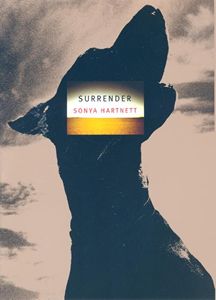 My family has a holiday house just past this forest, and for months after the bodies were discovered I would drive through the forest on my way to the house, and I always used to think of Matthew making the same drive, with the bodies (he didn’t know he’d failed to kill them, he’d only managed to knock them out -– and thus buried them alive) in the trailer behind his car, covered by his son’s blow-up pool. I used to wonder what he was thinking as he drove –- was he crawling with horror, or was he proud of what he’d done? And so from the story of Matthew Wales I gradually built up the plot of Surrender, starting from the idea of a boy who is angry and alone and who feels this huge need for revenge against the injustices he believes done to himself.
My family has a holiday house just past this forest, and for months after the bodies were discovered I would drive through the forest on my way to the house, and I always used to think of Matthew making the same drive, with the bodies (he didn’t know he’d failed to kill them, he’d only managed to knock them out -– and thus buried them alive) in the trailer behind his car, covered by his son’s blow-up pool. I used to wonder what he was thinking as he drove –- was he crawling with horror, or was he proud of what he’d done? And so from the story of Matthew Wales I gradually built up the plot of Surrender, starting from the idea of a boy who is angry and alone and who feels this huge need for revenge against the injustices he believes done to himself.
Everything about the book was difficult to write, not least the pacing of the suspense and the revelations. I wrote it in several layers, each draft focusing on a different aspect of the story -– Gabriel and Finnigan, Gabriel and his parents, Gabriel and Evangeline, etc. I am never friends with the books that are difficult to write, so Surrender is not one of my favourites. It has done well for itself, however -– it never needed me.
7-Imp: You’ve described more than once before a sort of jaded resignation when it comes to your writing career, as if you’re kind of stuck doing this and aren’t trained to do anything else anyway. Do you find writing fulfilling yet?
Sonya: No, not really. But I fight my fate less fiercely now. Writing has given me a good, if sometimes precarious, life. I’m lucky to be able to do this, when there are so many worse things I could be doing. My work has taken a lot from me, but it’s also given me a great deal. It has pillaged me; it has rescued me. It’s brought me not a truly fulfilled life, but a decent one. I have accepted that writing is what I do, and will do until the time comes when I can mercifully keel over or retire, whichever comes first.
7-Imp: Since a lot of your books have what is often called “dark” subject matter (do you get tired of hearing that, too?) and rather grim humor at times, what gives you “lightness of being” in your every day life?
Sonya: My dog makes me laugh. I love his beautiful face, his vanity, his cleverness. I love all animals. I love to garden, to see things successfully grow. I like trees and wild weather. My work is, as you say, seen as dark, but I don’t think it is, not really. I think it is simply clear-eyed. It’s not, I’ll admit, cheery, but nor do I think it relentlessly grim. As for myself, I am one of the most cheery people I know. I’m rarely in a bad mood. I think I make the best of situations. I am quite childish and absurd. My life is full of ridiculousnesses, and I like that. I still wake up early on Christmas Day and on my birthday, like a kid.
7-Imp: Are you ever going to give Catcher in the Rye another chance?
Sonya: No. Life is short.
7-Imp: Since perhaps some of our readers have never seen this, can you talk a bit about books that have influenced you, particularly as a young reader, and your feelings about American YA fiction? Can you tell us about your great respect for Robert Cormier’s writing and your correspondence with him?
Sonya: We didn’t have much access to books when we were kids -– we only got them on birthdays and Christmas. I loved books about animals, and so read The Horse and His Boy and Charlotte’s Web and anything that had an animal on its cover. I absolutely loved Enid Blyton, and used to save my 5-cents-a-week pocket money to buy her books. I liked The Tombs of Atuan and anything about horses. The first ‘book’ I wrote was about a kidnapped boy escaping on a horse through a spooky desert land, a plot which is a combination of all my favourite bits of other books.
 As a teenager I read Susie Hinton and Paul Zindel and Robert Cormier, who were the coolest writers at the time. I loved everything they wrote, and it was from them that I learned to think in a literary way about young people’s lives. I found the settings of the books to be quite puzzling and vibrant -– I didn’t know anything about America, but it sounded a much more exciting place than Australia. People in America were always getting into knife fights or carrying baby raccoons around in their pockets.
As a teenager I read Susie Hinton and Paul Zindel and Robert Cormier, who were the coolest writers at the time. I loved everything they wrote, and it was from them that I learned to think in a literary way about young people’s lives. I found the settings of the books to be quite puzzling and vibrant -– I didn’t know anything about America, but it sounded a much more exciting place than Australia. People in America were always getting into knife fights or carrying baby raccoons around in their pockets.
Robert Cormier was the first writer to show me what could be done with words. Most books I’d read, as a child and teenager, approached the novel in a fairly straightforward, unadventurous way. I was under the impression that a book couldn’t really be written in a style other than this. But Cormier showed me otherwise -– he was such a daring writer, and taught me (particularly with After the First Death) that a book can be a twisting, turning, untrustworthy, and mischievous thing. He showed me that a book doesn’t have to follow bland rules –- that a writer can make their own rules about how to approach writing, and needn’t shy from really challenging themselves and the reader.
When I wrote Sleeping Dogs, I often remembered how it had felt to read After the First Death for the first time. It was, at fifteen, a book I found extraordinarily original and daring. Every time I quailed a bit, in the writing of Sleeping Dogs, I remembered Cormier’s bravery. He had never shrunk from writing whatever that book demanded. When Sleeping Dogs was about to be published, I wrote to Cormier explaining how his work had influenced the novel, and sent him a copy. He wrote back, and for many years we corresponded. He was an amazingly generous and kind man — he seemed to be a very good-hearted man. He supported my work in all sorts of situations, and now, whenever someone comes to me with a request that I’d rather ignore, I try to remember Cormier, and how decent he was to me. And then I grit my teeth, and usually do as I’m asked.
{Ed. Note: Indeed, Cormier was a fan of Hartnett as well, as indicated in this 2000 interview at Teenreads.com}.
 7-Imp: Can you tell us about your inspiration(s) for writing The Silver Donkey? Did you intentionally set out to write a novel that would be indisputably for children?
7-Imp: Can you tell us about your inspiration(s) for writing The Silver Donkey? Did you intentionally set out to write a novel that would be indisputably for children?
Sonya: I did set out to write a novel for children. I had wanted to write a children’s book for many years, but I wanted to find the best story I could. I wanted to write a novel that reflected the sturdy classics of children’s literature –- not something kind of modern or throw-away. Before I started, I read and reread some of the best children’s books -– Charlotte’s Web, Lion, Witch and Wardrobe, Red Badge of Courage, lots of others.
I had seen a documentary about the WWII evacuation of Dunkirk, and been struck by the bravery of the fishermen involved in that perilous rescue of allied soldiers in the middle of the night. It made me decide to set the book during the war (for various reasons I chose the First, not the Second, World War as the setting -– mostly because I wanted the evocativeness of trench warfare). I already knew that I wanted to write about the grand themes found in children’s literature –- loyalty, courage, forgiveness, trust, etc., etc. The war seemed an appropriate background for such themes.
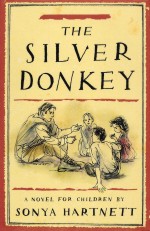

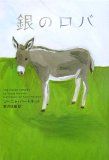 But I didn’t want war to be the focus of the book, and for a long time I shelved the idea, because I couldn’t think of what the story would be about, other than war. It wasn’t until I found a little silver donkey statue in an antique shop in the country town of Ballarat that I was finally able to find the image around which the novel would revolve. Donkeys as animals embody all those grand themes I hoped to include. And the donkey statue itself was so gorgeous, I knew it would make a charming hook on which to hang the story.
But I didn’t want war to be the focus of the book, and for a long time I shelved the idea, because I couldn’t think of what the story would be about, other than war. It wasn’t until I found a little silver donkey statue in an antique shop in the country town of Ballarat that I was finally able to find the image around which the novel would revolve. Donkeys as animals embody all those grand themes I hoped to include. And the donkey statue itself was so gorgeous, I knew it would make a charming hook on which to hang the story.
It’s the only time I’ve even been thus inspired by an object –- I wish it happened more often. It was the best window shopping I ever did, the best $20 (about $14US) I ever spent. I kept the donkey beside me while I wrote the book. I must have spent hours idly staring at it. Then, for months after I finished the novel, I could hardly bear the sight of it. I had to hide it in a cupboard. We just had a little too much of each other’s company. But now I take it with me when I do talks, and people love to see it and hold it. It never looks the same as they imagined, so I’m told.
7-Imp: You have described yourself as a “tremendously moral writer.” Which, if any, of all your novels most reflects your own views on and/or struggles with morality? Are there any of your characters whose emotional struggles have reflected your own in any way? To what do you attribute your great sympathy for the damaged child protagonists in your novels, and is it hard to say goodbye to them when you complete your writing? Was it hard as hell to write the ending for What the Birds See?
Sonya: It reads strangely to read myself calling myself a “tremendously moral writer,” although I stand by the claim. Many would not call me a tremendously moral person, but I have my own morality (warped as it may be). There’s not much I wouldn’t do, but there are also many types of behaviour that I despise. I hate people who are cruel to animals, wasteful of the environment, and thoughtlessly or deliberately cruel to each other. If ever such behaviour is displayed by my characters, I am always obviously disapproving of it. And I would never present favourably, in my books, such things as teenage parenthood or anti-intellectualism, anything that I think is bad for an individual and for society as a whole. I guess these aren’t, however, what you’d call morals. As I say, I don’t have many of them -– at least not the classically-recognized ones.
But a lot of the books look at issues of right behaviour and wrong behaviour under particular circumstances. Sleeping Dogs, All My Dangerous Friends, Stripes of the SideStep Wolf, Thursday’s Child, and Surrender all present circumstances where a character (and the reader) is asked to make decisions not on what society would expect them to do, but on what they themselves feel they need to do. I guess my morality is the Morality of the Individual. You do what seems right to you, whilst trying to inflict the least harm.
It wasn’t hard to write the end of What the Birds See. As a writer, I think of my characters as my tools -– I long ago gave up thinking of them as real people, or as friends. I had put a lot of myself into Adrian (and it’s this that gave me my sympathy for him, and for child characters such as Harper Flute), but although he presents as a Real Boy to readers, to me he was a means to an end. He was created so the novel could have a start, middle, and finish. His finish might be sad for the reader, but for me it meant the successful telling of a tale, the creation of a work -– a beginning, rather than an end.
7-Imp: Can you tell us a bit about your writing process? Do you outline plot before you write or just let your muse lead you on and see where you end up? Do you use any bits of information from film-making (your field of study in college) when writing, such as storyboarding, by chance?
Sonya: Each book varies considerably in how it’s written -– Surrender in that painstaking layered way, The Silver Donkey (and most of the others) in a very straightforward linear way . . . When I was young, I used to just start with a vague idea, and see where it went. It was a good way to learn about plotting — although plot remains my most critical weakness –- and about a thousand other little important things when it came to constructing a novel (i.e., your character’s financial background is the first thing to decide). I call it Ride-A-Wild-Pony writing -– that kind of freefall through the story, hanging on for grim death, getting chucked off, not knowing where you’ll land. RAWP-style involves making lots of mistakes, and wasting a fair amount of time, but these are all good things, because every mistake teaches you something.
However, I am a professional now, and I try to be professional in my approach to my work. Now I do Dressage writing. I usually know exactly what is going to happen in the book before I write a word. I often do storyboard a novel, but not always. When I do storyboard, I use different coloured cards -– each colour represents a different aspect of the book. The What the Birds See storyboard was colour-coded to the different threads in the story -– Adrian at school, Adrian at home, Adrian and the neighbours, the missing children. Other storyboards are coded to the appearance of individual characters, or to the placing of key events.
I find that having the book well-planned in advance makes for fairly unexciting writing -– it is really a matter of just joining the literary dots -– but it is the best way I’ve found to write a balanced, well-rounded, and finished work.
I tend to go long periods of time when I’m not writing, and then, once I start a book, I will work on it very intensely until it’s finished. I’ll try to write a bit of the novel every day. When the book is done, I happily retire into doing anything but writing. I am not one of those people who have an overwhelming craving to write. Maybe I did, when I was younger, but not anymore. Writing is work, to me, and I’m no great fan of work.
I’ve never attended a writing course or anything like that. Everything I know about writing is something I’ve either taught myself, learned from reading novels, or had drummed into my head by one of the several excellent editors I’ve had through the years. The editor I work with most often, Alex, is a poet and an ex-editor of the Oxford dictionary, so he brings interesting and precise skills to the table. He, more than anyone, has helped me refine and polish my work.
7-Imp: Can you tell us about any upcoming titles?
 Sonya: The next one is called The Ghost’s Child –- it is being published in Australia in July. I don’t know if it will be released overseas. It’s the story of a girl growing up in coastal Victoria at the turn of the century. I wrote it as a book for young teenagers, but I don’t know if it ended up being one. It is quite a demanding book, even though the story is quite straightforward and the language is simple. People are calling it an Adult Fable. So, even before it is released, it’s getting itself confused over its market. What joy.
Sonya: The next one is called The Ghost’s Child –- it is being published in Australia in July. I don’t know if it will be released overseas. It’s the story of a girl growing up in coastal Victoria at the turn of the century. I wrote it as a book for young teenagers, but I don’t know if it ended up being one. It is quite a demanding book, even though the story is quite straightforward and the language is simple. People are calling it an Adult Fable. So, even before it is released, it’s getting itself confused over its market. What joy.
7-Imp: What’s one thing most people don’t know about you?
Sonya: I was a Brownie for two months when I was ten. Mum sent me against my will, trying to make me more sociable. I loathed it, and earned no badges.
7-Imp: Is there a question you wish interviewers would ask you, but they usually don’t? Feel free to ask and answer here.
Sonya: No, nothing. In the last 25 years I’ve been asked just about everything.
7-Imp: We like to conclude our interviews by posing to people the weird and wonderful set of questions called The Pivot Questionnaire, since who knew that asking someone, say, what their favorite sound or noise is could tell you so much about them. So here goes:
What is your favorite word?
Sonya: “Reckless.”
7-Imp: What is your least favorite word?
Sonya: “Dentist.”
7-Imp: What turns you on creatively, spiritually, or emotionally?
Sonya: A warm north wind.
7-Imp: What turns you off?
Sonya: Cruelty to animals.
7-Imp: What is your favorite curse word? (optional)
Sonya: “Gobshite.”
7-Imp: What sound or noise do you love?
Sonya: My husky, Shilo, howling.
7-Imp: What sound or noise do you hate?
Sonya: Baby-bawling.
7-Imp: What profession other than your own would you like to attempt?
Sonya: Zoo keeper.
7-Imp: What profession would you not like to do?
Sonya: Dog catcher.
7-Imp: If Heaven exists, what would you like to hear God say when you arrive at the Pearly Gates?
Sonya: “I forgive you for not believing in me.”
* Hear Hartnett talk about Surrender and the pleasure of it being awarded a Printz Honor (.mp3 file courtesy of Candlewick Press)
* Profile (biography, bibliography, and prizes/awards) at the British Council — Arts (Contemporary Writers in the UK); Undated
* Hartnett’s Wikipedia entry, which includes a bibliography with awards listed; Undated
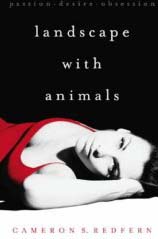 * “Faking It,” Hartnett’s response to the controversy over Landscape With Animals at The Age; May 28, 2006
* “Faking It,” Hartnett’s response to the controversy over Landscape With Animals at The Age; May 28, 2006
* “From child’s play to adults only” by Catherine Keenan at The Sydney Morning Herald; May 13, 2006
* “Children, adults, anything: Sonya Hartnett can turn her pen to any market, and any subject” by Jason Steger at The Age; October 31, 2004
* “In her own write,” article about and conversation with Hartnett by Jason Steger at The Age; August 24, 2003
* Interview in five parts at ACHUKA Children’s Books UK; January 2003
* “Dig a little deeper (Winner of the Guardian Children’s Fiction Prize, Australian Sonya Hartnett tells the chair of the judging panel that she writes for herself not for children),” article about Thursday’s Child and conversation with Hartnett; written by Julia Eccleshare at Guardian Unlimited Books; October 12, 2002
* “The Writing Life” written by Jane Sullivan at The Age; July 1, 2002
* “Books I Love” (Melbourne Writers’ Festival 2001) by Sonya Hartnett; August 2001
* “Mining Emotion” by Murray Waldren; First published in The Weekend Australian; May 8, 2000
and . . .
* “Imagining a nation,” a review of The Best Australian Stories 2002 (edited by Peter Craven), in which Hartnett contributed a story, “The Dying Words of the Archangel” (which seems to be an extract of Surrender); Reviewed by Felicity Henderson at the web site of Trinity College — The University of Melbourne
- Laura Ruby at Miss Erin
- Bennett Madison at Shaken & Stirred
- Shaun Tan at A Fuse #8 Production
- Chris Crutcherat Bookshelves of Doom
- Holly Black at The YA YA YAs
- Kazu Kibuishi at Finding Wonderland
- Christopher Golden at Bildungsroman
- David Brin at Chasing Ray
- Kirsten Miller at Jen Robinson’s Book Page
- Sara Zarr at Big A, little a

I am so glad you guys brought Sonya to my attention – prior to the SBBT I was completely unfamiliar with her work. I will be getting my hands on several of her books very soon and look forward to experiencing her writing for myself.
What a fascinating interview. Great job, as always.
sonya hartnett you are a bloody legend! Much respect.
Wow y’all. Thanks for a great interview. So many pretty pictures, too! I think I just found our book club’s next author to enjoy.
Thanks, you all. Colleen and Bryn, keep us updated as to your responses to whatever you end up reading of Hartnett’s. As I was just telling Sonya herself, I really might just have to (try to) order The Ghost’s Child from Penguin Australia, as I don’t think I can wait (and wait and wait) ’til the US decides to get a hold of it. (And how great is that cover?).
You ALA-go’ers get to meet her/see her this weekend. Have fun.
She’s absolutely amazing! One of my favorite writers.
What a great interview!
I was so deeply affected by Of a Boy i cried off and on for 2 days after reading it in one steady session. I can’t imagine letting a 9 year old reading it. It left me shattered. Truly amazing writing.
Well, I saved this until WAY after breakfast, because I was working today. Good thing, too, because this remarkably intense and intimate interview just knocked me over.
And the boxed quote? Holy Crap. I should pin that to my desk, but it might burn a hole. Powerful stuff.
My first Sonya Hartnett book was Thursday’s Child, and it was so… beautiful. And so odd. And it just stayed with me and stayed with me. Ditto What the Birds See. This is an amazingly great interview.
Wow! I’ve never read any of Sonya’s books, but this makes me want to. I especially appreciated this quote:
“It’s a thankless task, writing for kids in this country. It is bad enough, having to deal with less money, less respect, less recognition -– but, in addition, you have to deal with loud, doltish people who think that, because you are writing for their children, they should have a say in what you can and can’t write.” Sad, but true.
Wow! Another amazing interview. And Cormier is quite the influence! Sara Zarr also spoke about Cormier.
Great stuff as usual. Thanks for introducing me to Hartnett’s writing.
Have just discovered this site. This is the most interesting author interview I’ve read for ages. I’m fascinated by what SH says about her characters being real to readers but a means to an end to her, and how she plans out her books, and that writing is work rather than a compulsion (makes a really nice change to the fetishization of the author which seems to abound these days).
On classifiying SH’s books – I can really see why she’s fed up with this issue and it’s one that (as a ‘children’s writer’)annoys me too. But when I read (and greatly admired) Thursdays’ Child I felt quite strongly that it was not a children’s/teen book. Not that I thought it was unsuitable or anything – I guess I just knew that if I’d read it as a child/teenager I would really, really have hated it. But that’s just me, obviously (i hated Alice in Wonderland and Winnie the Pooh too as a child… Cormier changed my life though)
Anyway I will look out for more of her books now. And I LOVE the Ghost’s Child cover.
Wow. This is a real potboiler of a chat. I have the Printz book on my pile but haven’t read it, or the others and now’s the time. Am feeling great gap in my brain!!! Thanks to you guys for this!
Australia has some of the most brilliant writers. What’s up with that?
I read Surrender a couple of months ago. The writing is so incredibly beautiful. It’s hard to imagine a psychological thriller written with such beauty — it made it so much easier to bear.
Another great interview!
[…] 25 authors being interviewed this week as part of the summer blog tour only 3 are Australian (me, Sonya Hartnett and Shaun […]
[…] then Sonya Hartnett in her interview earlier this week was talking about how difficult it is for her to be taken seriously at home because she […]
My name is jessica and I wanted to say that i love your book the silver donkey i really hope you will write more I will look for your new book
PS. I will be the first to by
[…] in Australia in 2007, I believe, and published last year in the U.S. by Candlewick. Remember when Sonya stopped by in ‘07 and said quite determinedly that she doesn’t like her books to be pinned down when it comes […]
I feel excellent people would agree with your post. I am going toward bookmark this web website so I can come back with glance at more items. Keep up the fantastic work!
Sonya Hartnett is a wonderful person, I think.
[…] Sadie and Ratz, by one of my favorite authors for older people, Sonya Hartnett (interviewed here at 7-Imp in 2007, during the 7-Imp era in which images were tragically […]
[…] week, I wrote about Sonya Hartnett’s new early chapter book for young readers, Sadie and Ratz, scheduled to be released by Candlewick at […]